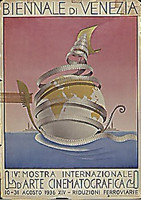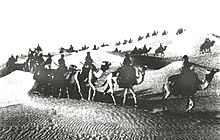
Pietro Badoglio, 1st Duke of Addis Abeba, 1st Marquess of Sabotino, was an Italian general during both World Wars and the first viceroy of Italian East Africa. With the fall of the Fascist regime in Italy, he became Prime Minister of Italy.

Mario Alberto Ettore Monicelli was an Italian film director and screenwriter and one of the masters of the Commedia all'Italiana. He was nominated six times for an Oscar, and was awarded the Golden Lion for his career.

Savari was the designation given to the regular Libyan cavalry regiments of the Italian colonial army in Tripolitania and Cyrenaica. The word "savari" was derived from a Persian term for "horsemen" (Savārān).

The Italian colonizationof Libya began in 1911 and it lasted until 1943. The country, which was previously an Ottoman possession, was occupied by Italy in 1911 after the Italo-Turkish War, which resulted in the establishment of two colonies: Italian Tripolitania and Italian Cyrenaica. In 1934, the two colonies were merged into one colony which was named the colony of Italian Libya. In 1937, this colony was divided into four provinces, and in 1939, the coastal provinces became a part of metropolitan Italy. The colonization lasted until Libya's occupation by Allied forces in 1943, but it was not until the 1947 Paris Peace Treaty that Italy officially renounced all of its claims to Libya's territory.

Augusto Genina was an Italian film pioneer. He was a movie producer and director.
John Troglita was a 6th-century Byzantine general. He participated in the Vandalic War and served in North Africa as a regional military governor during the years 533–538, before being sent east to the wars with the Sassanid Persians. As dux Mesopotamiae, Troglita distinguished himself in several battles, and was noticed by agents of the Byzantine emperor, Justinian I. In summer 546, Justinian chose John Troglita to assume overall command of Byzantine forces in Africa, where a succession of revolts by the indigenous Moorish tribes and within the imperial army itself had seriously reduced the Byzantine position. Troglita quickly secured an initial victory in the winter of 546/547 against the Moors of Byzacena, but was defeated in summer 547 by the tribes of Tripolitania, and Africa was once again laid open to destructive raids. Troglita reorganized his army and secured the assistance of some tribal leaders, and confronted and decisively defeated the tribal coalition at the Fields of Cato in summer 548. This victory spelled the end of the Moorish revolt and heralded an era of peace for Africa. Troglita was also involved in the Gothic War, twice sending some of his troops to Italy to assist against the Ostrogoths.

Italian Libya was a colony of the Kingdom of Italy located in North Africa, in what is now modern Libya, between 1934 and 1943. It was formed from the unification of the colonies of Italian Cyrenaica and Italian Tripolitania, which had been Italian possessions since 1911.

Fosco Giachetti was an Italian actor.

Italian Tripolitania was an Italian colony, located in present-day western Libya, that existed from 1911 to 1934. It was part of the territory conquered from the Ottoman Empire after the Italo-Turkish War in 1911. Italian Tripolitania included the western northern half of Libya, with Tripoli as its main city. In 1934, it was unified with Italian Cyrenaica in the colony of Italian Libya.

Guido Celano was an Italian actor, voice actor and film director. He appeared in 120 films between 1931 and 1988. He also directed two Spaghetti Westerns: Cold Killer and Gun Shy Piluk. He was born in Francavilla al Mare, Italy and died in Rome, Italy.

The 4th annual Venice International Film Festival was held between 10 and 31 August 1936. This year saw an international jury nominated for the first time.

The 1945 Anti-Jewish riots in Tripolitania was the most violent rioting against Jews in North Africa in modern times. From November 5 to November 7, 1945, more than 140 Jews were killed and many more injured in a pogrom in British-military-controlled Tripolitania. 38 Jews were killed in Tripoli from where the riots spread. 40 were killed in Amrus, 34 in Zanzur, 7 in Tajura, 13 in Zawia and 3 in Qusabat.

The Second Italo-Senussi War, also referred to as the Pacification of Libya, was a conflict that occurred during the Italian colonization of Libya between Italian military forces and indigenous rebels associated with the Senussi Order. The war lasted from 1923 until 1932, when the principal Senussi leader, Omar al-Mukhtar, was captured and executed.

Anchise Brizzi was an Italian cinematographer.

The Great Appeal is a 1936 Italian war film directed by Mario Camerini and starring Camillo Pilotto, Roberto Villa and Lina d'Acosta. It is sometimes known by the alternative title The Last Roll-Call.

Cesare Polacco was an Italian actor and voice actor.

Ruth Ben-Ghiat is an American historian and cultural critic. She is a scholar on fascism and authoritarian leaders. Ben-Ghiat is professor of history and Italian studies at New York University.

Antonio Veretti was an Italian composer.
















